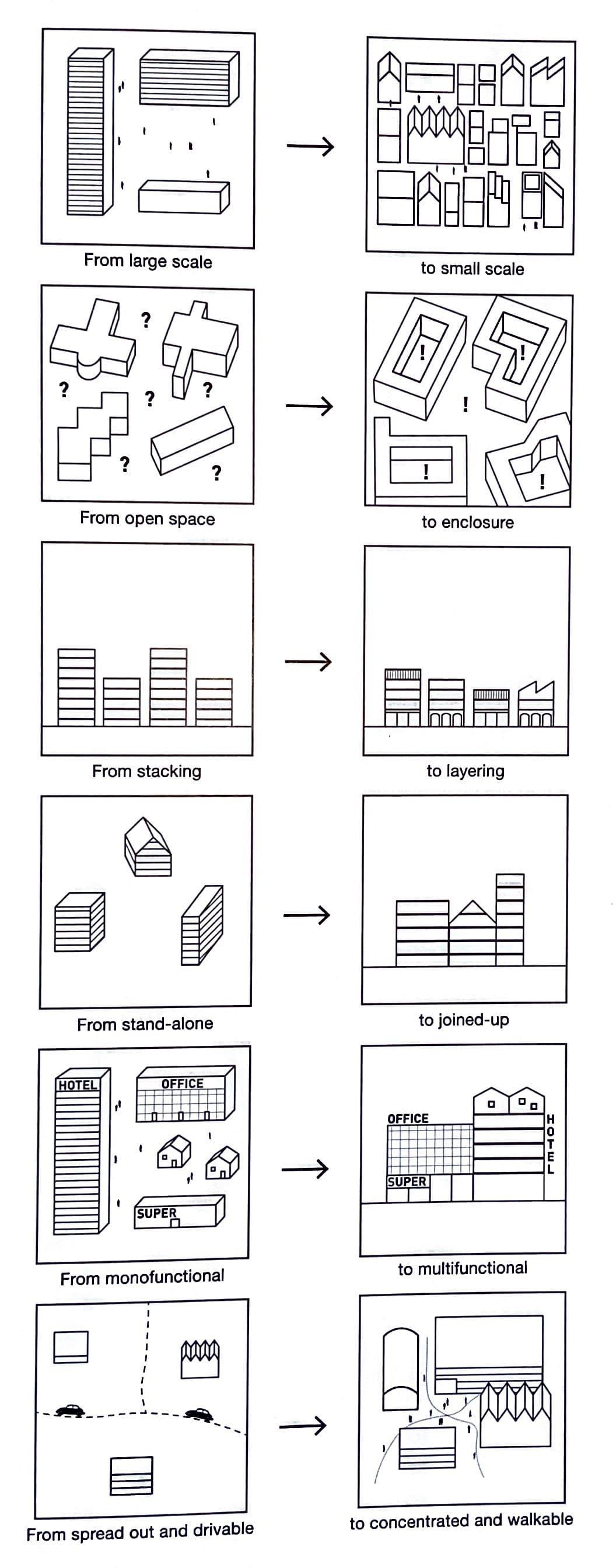
2 minute read
Density and Diversity
David Sim (2019) has been an important influence in this masterwork and I find his ‘soft city’ approach to urban design that, if adopted, could help many cities to be more socially sustainable and make a more efficient use of land.
Soft City explains that the fusion of density and diversity increases the chances of useful things, places, and people being nearby. This leads to likelihood of symbiotic relationships: improve reciprocal access to employers and employees, teachers, schools and students, etc. Following from Moreno’s diagnosis, the space is thought in terms of time, and it explains that there are many ways in which time can be measured: in steps, cycle rides or train rides, and not by car trips. Other people may take other less-obvious ways to measure time and distance: the duration of a song, a film, a laundry wash, etc. which humanise the experience and value of time, reflecting, in my view, that time is more valuable than just minutes or hours, but as actions, relationships, moments.
Advertisement
From Sim and Moreno, I take the importance of what can be done in a period of time, rather than the time itself, and I agree with Moreno’s concept of the city of the 15 minutes that having all daily needs nearby is a success for saving time and enriching life with interaction, relations, moments… These refer to spaces and distances that are of a human scale and diverse enough as to mix and combine for a complete life.
Sim refers to the success of Vauban (a mixeduse development in Freiburg) in achieving social diversity through designing diverse spaces and buildings: from walk-up flats (3-5 storeys), to town houses. But also, with several interpretations of active ground floors, from doors to the street, front gardens, defensible spaces, shop windows, business units, outside stairs, decks, galleries, etc. And also, with a mix of spaces, from private front or rear gardens, terraces, roof tops, loggias, balconies, courtyards, some public some private, some, in between. And what structured all: a green corridor and a large plaza.
Chinchilla also states that there are not many places for care in cities. Playgrounds are mentioned as defined and fenced spaces for children that determine the type of care that this space can offer: one focused on surveillance and safety. But what the city is missing is valuable interactions of people (including children) and the personal and imaginative management of risk and socialisation. Therefore, both carers and people looked-after, need from spaces that do not predefine the sort of activities that can take place and that maintain curiosity alive and there is a small doses of unpredictability.
Takeaway
What I take from Sim and Chinchilla is that the diversity of places should be a rule in most designs where social sustainability is an objective. But also, that it is in the mix and flexibility of spaces where many activities can take place, including those that we haven’t designed for. A rigid design would only allow certain activity and not others.










